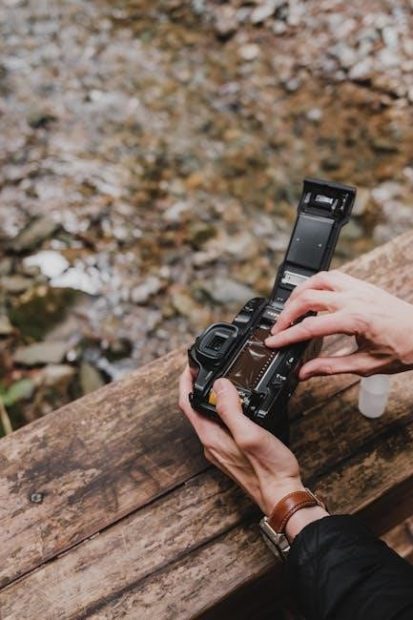Welcome to the comprehensive guide for Dometic water heater manuals. These manuals provide essential instructions for installation‚ operation‚ and maintenance of Dometic water heaters‚ ensuring optimal performance and safety.
1.1 Overview of Dometic Water Heaters
Dometic water heaters are designed for reliability and efficiency‚ offering a range of models to suit different needs. Constructed with high-strength aluminum tanks‚ these heaters are durable and resistant to corrosion. Popular models like the WH-6GA and WH-6GEA provide both gas and electric heating options‚ ensuring versatility. With capacities ranging from 6 to 16 gallons‚ Dometic water heaters are ideal for RVs and residential use. They feature advanced control systems‚ allowing users to switch between heating modes effortlessly. The compact design and energy-efficient operation make them a preferred choice for those seeking consistent hot water supply. These heaters are also equipped with safety features‚ such as temperature controls and secure venting systems‚ ensuring safe and reliable performance.
1.2 Importance of Reading the Manual
Reading the Dometic water heater manual is crucial for safe and efficient operation. It provides detailed instructions for installation‚ maintenance‚ and troubleshooting‚ ensuring proper functionality. The manual highlights safety precautions‚ such as draining the heater before winter storage and keeping vents clear‚ to prevent damage and hazards. Understanding the control panel and heating modes (gas or electric) is essential for optimal performance. Additionally‚ the manual offers guidance on handling propane and electrical connections safely. By following the manual‚ users can avoid common issues‚ extend the product’s lifespan‚ and ensure compliance with manufacturer recommendations. Regular maintenance tips‚ like inspecting for leaks‚ are also outlined to prevent water damage and maintain efficiency. Adhering to the manual ensures a reliable and safe hot water supply. Neglecting it may lead to performance issues or safety risks.
1.3 Key Features of Dometic Water Heaters
Dometic water heaters are designed with innovative features for reliability and efficiency. Constructed with high-strength aluminum tanks‚ they offer durability and resistance to corrosion. Models like the WH-6GA and WH-6GEA provide dual operation‚ allowing users to switch between gas and electric modes for flexibility. The control panel is user-friendly‚ enabling easy temperature adjustments and mode selection. These heaters are compact‚ making them ideal for RVs and limited spaces. Additional features include automatic temperature control and energy-saving options. The design ensures consistent hot water supply while minimizing energy consumption. These features combine to deliver a reliable‚ efficient‚ and safe hot water solution for various applications. Regular maintenance‚ as outlined in the manual‚ ensures these features continue to perform optimally.
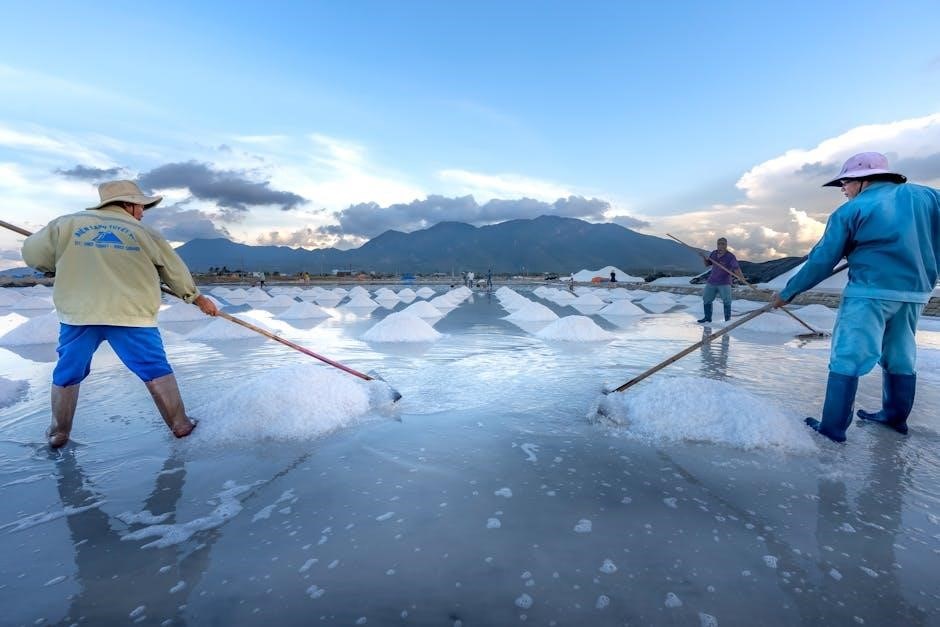
Installation Guide
The Dometic water heater installation guide provides step-by-step instructions for proper setup‚ ensuring safety and optimal performance. It covers pre-installation checks‚ required tools‚ and wiring diagrams to help users install the unit correctly. The guide emphasizes isolating the gas supply and ensuring venting systems are clear of obstructions. Specific tools like wire cutters and pliers are recommended for a smooth installation process. Adhering to these guidelines ensures compliance with safety standards and manufacturer recommendations. Proper installation is crucial for the heater’s longevity and functionality. Always refer to the manual for detailed instructions tailored to your specific Dometic model. This ensures a safe and efficient setup process. By following the guide‚ users can avoid common installation errors and enjoy reliable hot water supply. Regular checks and adherence to safety protocols are also stressed for long-term efficiency. The guide is comprehensive‚ making it accessible for both novice and experienced installers. Dometic’s detailed instructions aim to simplify the installation process‚ ensuring a hassle-free experience. Each step is outlined clearly‚ leaving no room for ambiguity. This ensures that the water heater operates at its best capacity‚ providing consistent hot water when needed. The installation guide is an essential resource for anyone setting up a Dometic water heater‚ offering peace of mind and operational confidence. By adhering to the guidelines‚ users can prevent potential issues and extend the lifespan of their water heater. The manual’s thorough approach ensures that all aspects of installation are covered‚ from initial preparation to final checks. This comprehensive guidance helps users achieve a professional-level installation‚ even without prior experience. The end result is a safely installed water heater that performs efficiently and reliably for years to come. The guide also serves as a quick reference for troubleshooting common installation challenges‚ providing solutions to ensure a smooth setup process. Overall‚ Dometic’s installation guide is a vital tool for anyone looking to install their water heater correctly and safely.
2.1 Pre-Installation Checks
Before installing your Dometic water heater‚ perform essential pre-installation checks to ensure a safe and successful setup. Verify the installation location is level‚ well-ventilated‚ and meets local building codes. Inspect the unit for any damage during shipping and ensure all components‚ including mounting brackets and connectors‚ are included. Check the power supply matches the heater’s voltage and wattage requirements. Ensure the gas supply lines (if applicable) are compatible and free from leaks. Review the manual to confirm the model is suitable for your water capacity needs. Test the temperature and pressure relief valves to ensure they function correctly. Finally‚ consult local regulations to comply with safety and installation standards. These checks prevent potential issues and ensure the heater operates efficiently. Proper preparation guarantees a safe and reliable installation process. Always prioritize safety and compliance before proceeding. This step is crucial for optimal performance and longevity of the water heater. By following these guidelines‚ you can avoid common installation mistakes and ensure the system functions as intended.
2.2 Step-by-Step Installation Instructions
2.3 Recommended Tools and Materials
For a successful installation‚ gather the necessary tools and materials. A adjustable wrench‚ screwdrivers (Phillips and flathead)‚ and a tape measure are essential. Teflon tape or pipe dope is required for threaded connections to prevent leaks. Water hoses compatible with the heater’s ports are needed for inlet and outlet connections. For gas models‚ a gas line connector and leak detection solution (e.g.‚ dish soap) are necessary. Electrical connections may require wire nuts or connectors‚ depending on the model. Ensure all materials meet local plumbing and safety standards. Proper tools and materials ensure a secure‚ leak-free‚ and safe installation. Refer to the manual for specific recommendations tailored to your Dometic water heater model. Using the right tools and materials is crucial for optimal performance and compliance with safety guidelines. Always prioritize quality and compatibility to avoid potential issues. This ensures a professional-grade installation and long-lasting reliability. By having everything ready‚ you can complete the installation efficiently and effectively. Proper preparation is key to a smooth process. Always double-check the manual for any model-specific requirements before starting. This helps avoid delays and ensures all steps are followed correctly. A well-prepared setup leads to a successful and safe installation. Make sure to have all tools and materials within reach to streamline the process; Proper installation is the foundation of reliable water heater operation. Taking the time to gather the right tools and materials ensures a professional-quality setup. This step is vital for achieving optimal performance and safety. Always follow the manual’s recommendations for tools and materials to guarantee compliance with safety standards. A well-prepared installation ensures years of trouble-free operation. Avoid shortcuts and use only approved materials to maintain warranty validity and safety. Proper tools and materials are investments in a safe and efficient water heating system. By adhering to these recommendations‚ you ensure a secure and functional installation. This step is critical for achieving the best results. Always refer to the manual for specific requirements and guidelines. Proper preparation ensures a smooth and successful installation process. Having the right tools and materials on hand is essential for completing the job efficiently and safely. This ensures a professional-grade installation and optimal performance of your Dometic water heater. Always prioritize quality and compatibility when selecting tools and materials. This guarantees a safe and reliable setup. Proper preparation is the key to a successful installation. By following these recommendations‚ you ensure a secure and functional water heater system. Always double-check the manual for any additional requirements specific to your model. This ensures compliance with safety standards and optimal performance. A well-prepared installation is the foundation of a reliable water heater. Always use the recommended tools and materials to achieve the best results. This step is crucial for a safe and efficient setup. Proper tools and materials ensure a professional-quality installation and long-lasting reliability. Always refer to the manual for specific guidelines and recommendations. By doing so‚ you ensure a secure and functional water heater system. This is essential for achieving optimal performance and safety. Always prioritize quality and compatibility when selecting tools and materials. This guarantees a safe and reliable setup. Proper preparation is the key to a successful installation. By following these recommendations‚ you ensure a secure and functional water heater system. Always double-check the manual for any additional requirements specific to your model. This ensures compliance with safety standards and optimal performance. A well-prepared installation is the foundation of a reliable water heater. Always use the recommended tools and materials to achieve the best results. This step is crucial for a safe and efficient setup. Proper tools and materials ensure a professional-quality installation and long-lasting reliability. Always refer to the manual for specific guidelines and recommendations. By doing so‚ you ensure a secure and functional water heater system. This is essential for achieving optimal performance and safety. Always prioritize quality and compatibility when selecting tools and materials. This guarantees a safe and reliable setup. Proper preparation is the key to a successful installation. By following these recommendations‚ you ensure a secure and functional water heater system. Always double-check the manual for any additional requirements specific to your model. This ensures compliance with safety standards and optimal performance. A well-prepared installation is the foundation of a reliable water heater. Always use the recommended tools and materials to achieve the best results. This step is crucial for a safe and efficient setup. Proper tools and materials ensure a professional-quality installation and long-lasting reliability. Always refer to the manual for specific guidelines and recommendations. By doing so‚ you ensure a secure and functional water heater system. This is essential for achieving optimal performance and safety. Always prioritize quality and compatibility when selecting tools and materials. This guarantees a safe and reliable setup. Proper preparation is the key to a successful installation. By following these recommendations‚ you ensure a secure and functional water heater system. Always double-check the manual for any additional requirements specific to your model. This ensures compliance with safety standards and optimal performance. A well-prepared installation is the foundation of a reliable water heater. Always use the recommended tools and materials to achieve the best results. This step is crucial for a safe and efficient setup. Proper tools and materials ensure a professional-quality installation and long-lasting reliability. Always refer to the manual for specific guidelines and recommendations. By doing so‚ you ensure a secure and functional water heater system. This is essential for achieving optimal performance and safety. Always prioritize quality and compatibility when selecting tools and materials. This guarantees a safe and reliable setup. Proper preparation is the key to a successful installation. By following these recommendations‚ you ensure a secure and functional water heater system. Always double-check the manual for any additional requirements specific to your model. This ensures compliance with safety standards and optimal performance. A well-prepared installation is the foundation of a reliable water heater. Always use the recommended tools and materials to achieve the best results. This step is crucial for a safe and efficient setup. Proper tools and materials ensure a professional-quality installation and long-lasting reliability. Always refer to the manual for specific guidelines and recommendations. By doing so‚ you ensure a secure and functional water heater system. This is essential for achieving optimal performance and safety. Always prioritize quality and compatibility when selecting tools and materials. This guarantees a safe and reliable setup. Proper preparation is the key to a successful installation. By following these recommendations‚ you ensure a secure and functional water heater system. Always double-check the manual for any additional requirements specific to your model. This ensures compliance with safety standards and optimal performance. A well-prepared installation is the foundation of a reliable water heater. Always use the recommended tools and materials to achieve the best results. This step is crucial for a safe and efficient setup. Proper tools and materials ensure a professional-quality installation and long-lasting reliability. Always refer to the manual for specific guidelines and recommendations. By doing so‚ you ensure a secure and functional water heater system. This is essential for achieving optimal performance and safety. Always prioritize quality and compatibility when selecting tools and materials. This guarantees a safe and reliable setup. Proper preparation is the key to a successful installation. By following these recommendations‚ you ensure a secure and functional water heater system. Always double-check the manual for any additional requirements specific to your model. This ensures compliance with safety standards and optimal performance. A well-prepared installation is the foundation of a reliable water heater. Always use the recommended tools and materials to achieve the best results. This step is crucial for a safe and efficient setup. Proper tools and materials ensure a professional-quality installation and long-lasting reliability. Always refer to the manual for specific guidelines and recommendations. By doing so‚ you ensure a secure and functional water heater system. This is essential for achieving optimal performance and safety. Always prioritize quality and compatibility when selecting tools and materials. This guarantees a safe and reliable setup. Proper preparation is the key to a successful installation. By following these recommendations‚ you ensure a secure and functional water heater system. Always double-check the manual for any additional requirements specific to your model. This ensures compliance with safety standards and optimal performance. A well-prepared installation is the foundation of a reliable water heater. Always use the recommended tools and materials to achieve the best results. This step is crucial for a safe and efficient setup. Proper tools and materials ensure a professional-quality
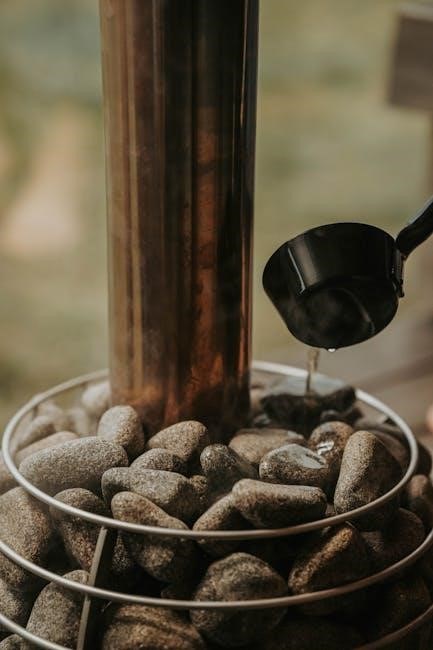
Operating Instructions
Understand the control panel‚ set desired temperature‚ and switch between gas and electric modes. Regularly check settings and ensure proper function for consistent hot water supply.
3.1 Understanding the Control Panel
The control panel is the central interface for operating your Dometic water heater. It typically features a digital display‚ temperature adjustment buttons‚ mode selection‚ and status indicators. Familiarize yourself with the panel layout to monitor water temperature‚ switch between gas and electric modes‚ and access diagnostic information. The display shows current temperature‚ mode‚ and error codes if issues arise. Buttons allow you to increase or decrease temperature‚ select operation mode‚ and reset the system. LED indicators provide visual feedback on power‚ heating status‚ and error conditions. Understanding the control panel ensures safe and efficient operation‚ enabling you to adjust settings and troubleshoot issues effectively.
3.2 Setting the Temperature

To set the temperature on your Dometic water heater‚ locate the control panel and press the temperature adjustment buttons. Use the “+” button to increase and “-” to decrease the desired temperature. The digital display will show the selected temperature‚ typically ranging from 100°F to 140°F. Ensure the temperature is set according to your needs‚ balancing comfort and energy efficiency. Once set‚ the heater will maintain the selected temperature. Always refer to the manual for specific instructions‚ as models may vary slightly. Proper temperature setting ensures optimal performance and safety‚ preventing scalding or excessive energy consumption. Adjustments are usually quick‚ with the display confirming your new setting.
3.3 Switching Between Gas and Electric Modes
To switch between gas and electric modes on your Dometic water heater‚ locate the mode selector switch on the control panel. Press the switch to toggle between “Gas” and “Electric” modes. The LED indicator will light up to confirm the active mode. Ensure the power is turned off before switching modes to avoid any issues. When in electric mode‚ the heater will rely solely on electricity‚ while gas mode uses propane for heating. This feature allows you to choose the most convenient or cost-effective option based on your location and energy availability. Always allow the heater to cool down before switching modes if it has been in use recently. Refer to the manual for specific model variations.
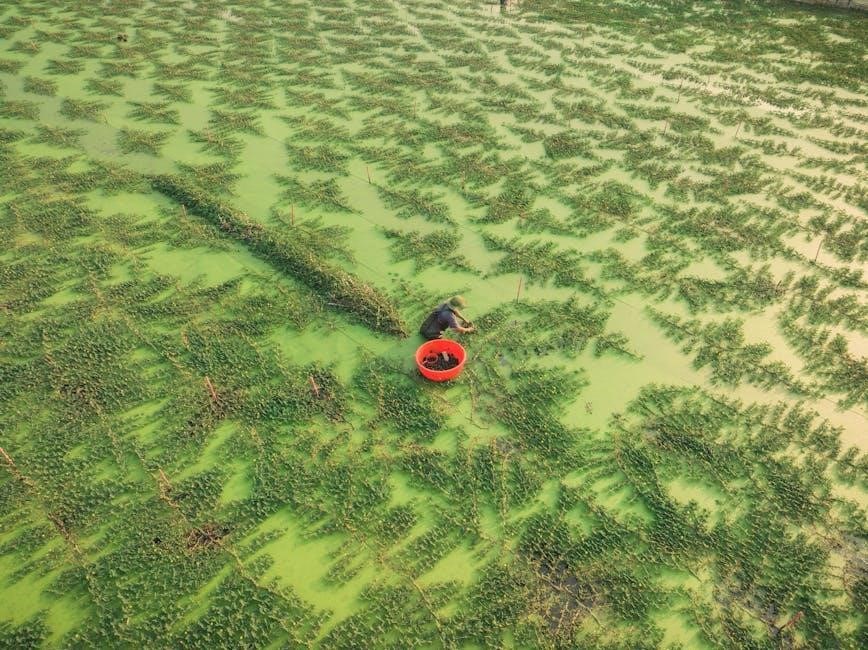
Maintenance and Care
Regular maintenance ensures optimal performance and longevity of your Dometic water heater. Schedule periodic inspections and cleanings to prevent mineral buildup and maintain efficiency. Follow all safety guidelines.
4.1 Regular Cleaning and Inspection
Regular cleaning and inspection are crucial for maintaining your Dometic water heater’s efficiency and longevity. Start by turning off the power and allowing the unit to cool. Inspect for leaks around connections and ensure proper venting. Check the anode rod for corrosion and replace it if necessary. Clean the exterior with a soft cloth and mild detergent to prevent dust buildup. For the interior‚ drain a few gallons of water to remove sediment‚ which can reduce heating efficiency. Always follow the manual’s specific instructions for your model. Regular maintenance helps prevent issues like reduced performance or unexpected breakdowns. Schedule inspections every 1-2 months for optimal results.
4.2 Draining the Water Heater
Draining your Dometic water heater is essential for removing sediment and maintaining performance. Begin by turning off the power and allowing the unit to cool. Locate the drain valve‚ usually at the bottom of the heater. Attach a garden hose to the valve and direct the other end to a suitable drain location. Open the valve and allow the water to flow out completely. If the water is hot‚ exercise caution to avoid burns. After draining‚ close the valve and refill the tank according to the manual’s instructions. Regular draining helps prevent mineral buildup and ensures efficient operation. Always follow safety guidelines and refer to your specific model’s manual for detailed steps.
4.3 Winterization Procedures
Winterizing your Dometic water heater is crucial to prevent damage from freezing temperatures. Start by draining the tank completely‚ as outlined in the manual. Next‚ bypass the water heater to avoid using it during cold months. Use a water heater bypass kit to direct water flow away from the unit‚ saving antifreeze and protecting the system. Insulate exposed pipes and the water heater location to prevent freezing. If storing the RV‚ ensure the water heater is empty and all valves are closed. For extreme cold‚ consider using a high-quality insulation kit or consult a professional for additional protection. Always follow the manual’s specific winterization steps to ensure your Dometic water heater remains in optimal condition year-round.
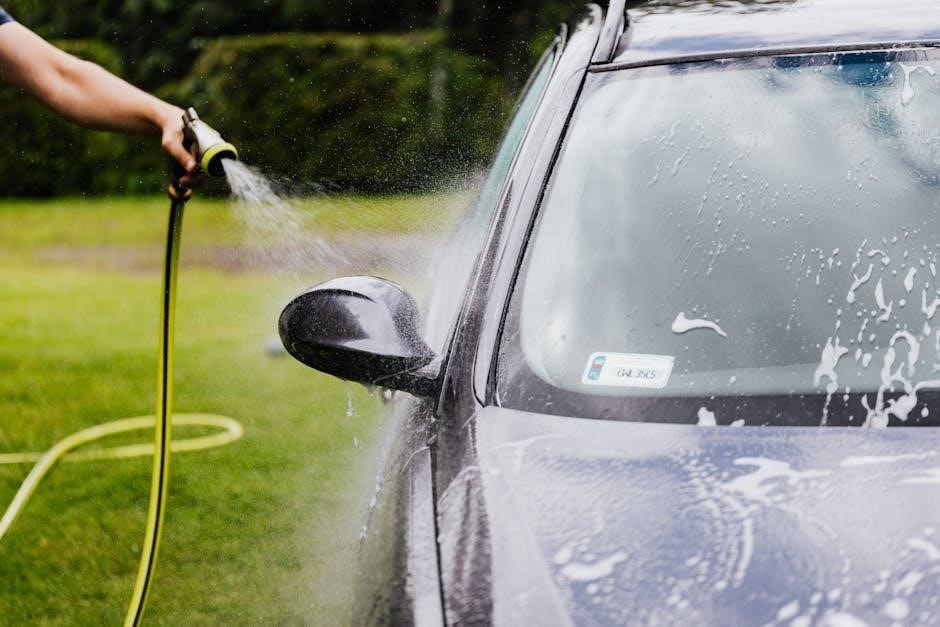
Safety Precautions
Ensure proper ventilation to avoid carbon monoxide buildup. Keep flammable materials away from the heater. Avoid improper installation‚ as it can lead to safety hazards. Always follow the manual’s guidelines for electrical connections and water temperature settings to prevent scalding. Regularly inspect for leaks or damage to maintain safe operation. Adhere to all safety warnings provided in the Dometic water heater manual to ensure a secure and reliable experience.
5.1 General Safety Warnings

Always follow the Dometic water heater manual’s safety guidelines to ensure safe operation. Proper ventilation is essential to prevent carbon monoxide buildup. Never install the heater in confined or poorly ventilated spaces. Keep flammable materials away from the unit. Avoid temperatures exceeding 120°F to prevent scalding. Ensure all electrical connections are secure and meet local codes. Never tamper with safety devices or bypass them. Regularly inspect the unit for leaks or damage. Keep children and pets away from the heater. Follow all warnings and precautions labeled on the appliance. Failure to comply may result in injury‚ property damage‚ or void the warranty. Adhere to these guidelines for safe and reliable performance.
5.2 Venting and Combustion Air Requirements
Proper venting is critical for safe and efficient operation of your Dometic water heater. Ensure the venting system is installed according to the manual and local codes. Use approved venting materials to prevent corrosion and heat damage. Horizontal venting requires a rise of at least 1/4 inch per foot to ensure proper draft. Vertical venting must comply with height restrictions and clearance requirements. Provide adequate combustion air by ensuring the room has sufficient airflow. A minimum of 10 cubic feet of space per 1‚000 BTU is recommended. Never use unapproved materials‚ as they may release harmful fumes or melt. Regularly inspect venting for blockages or damage to maintain safe operation.
5.3 Handling Propane and Electrical Connections
Always follow safety guidelines when handling propane and electrical connections for your Dometic water heater. Ensure propane lines are leak-free and securely connected using approved fittings and materials. Turn off the main gas valve before servicing or disconnecting. For electrical connections‚ verify the voltage matches the heater’s specifications. Use a licensed electrician if unsure. Never overload circuits‚ as this can cause damage or fire hazards. Keep electrical components dry and avoid touching them with wet hands. Before servicing‚ always switch off the power supply and allow the unit to cool. Properly ground the system to prevent electrical shocks. Follow local codes and manufacturer recommendations for safe installation and maintenance.
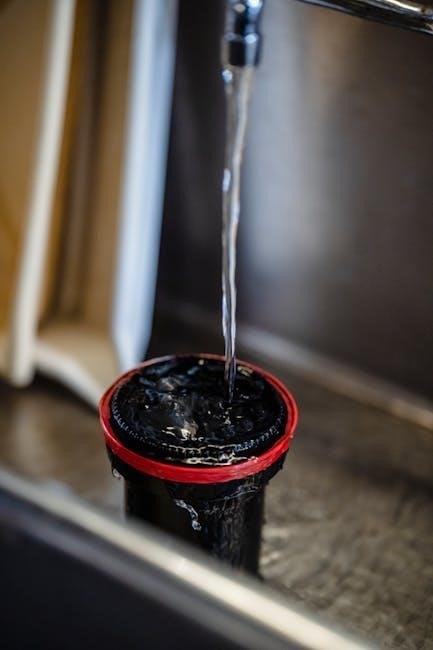
Troubleshooting Common Issues
Identify and resolve common problems like no hot water‚ leaks‚ error codes‚ or ignition issues. Refer to the manual for specific solutions and diagnostics guidance.
6.1 No Hot Water
If your Dometic water heater isn’t producing hot water‚ start by checking the power supply and ensuring the unit is turned on; Verify that the circuit breaker hasn’t tripped and all connections are secure. For gas models‚ ensure the propane supply is adequate and the gas valve is open. Check the temperature setting on the control panel to confirm it’s not set too low. If using electric mode‚ ensure the heating element is functioning. Inspect for error codes on the display‚ as these can indicate specific issues like faulty thermostats or sensors; Consult the manual for code meanings and reset instructions if necessary. If problems persist‚ contact Dometic support for assistance. Always prioritize safety when troubleshooting electrical or gas systems;
6.2 Leaks or Water Damage
If you notice leaks or water damage around your Dometic water heater‚ act quickly to prevent further issues. First‚ turn off the power and water supply to the unit. Inspect the connections‚ hoses‚ and drain valve for any signs of wear or looseness. Tighten any loose fittings and replace damaged or corroded parts immediately. Check the tank for rust or cracks‚ as these can lead to leaks. If the leak persists‚ drain the water heater and contact a professional for repairs. Regular maintenance‚ such as inspecting seals and gaskets‚ can help prevent leaks. Addressing water damage promptly can prevent mold growth and electrical hazards. Always refer to the manual for specific guidance on handling leaks safely and effectively.
6.3 Error Codes and Solutions
Dometic water heaters display error codes to indicate specific issues. Understanding these codes is crucial for quick troubleshooting. For example‚ an E1 code often relates to high temperature limits‚ while an E3 code may indicate a sensor malfunction. Refer to the manual for a full list of codes and their meanings. To resolve issues‚ first‚ ensure the power is turned off. Check sensors‚ connections‚ and electrical components for damage or blockages. For temperature-related errors‚ verify thermostat settings and ensure proper ventilation. If the issue persists‚ reset the system by turning it off and on. Always consult the manual for code-specific guidance‚ and contact a professional if problems remain unresolved. Regular maintenance can help prevent errors and extend the heater’s lifespan.

Technical Specifications
Dometic water heaters include models like the WH-6GA (gas) and WH-6GEA (electric). Capacities range from 6 gallons‚ with power inputs up to 12‚000 BTU for gas models. They feature temperature ranges of 40-140°F‚ rapid recovery rates‚ and high energy efficiency with EF ratings up to 0.93.
7.1 Dometic WH-6GA Model Details
The Dometic WH-6GA is a propane-powered water heater designed for RVs and campers. It offers a 6-gallon capacity‚ ideal for small to medium-sized rigs. Compact in size‚ it measures 14.25 inches tall and 12.25 inches wide‚ making it a space-saving solution. The WH-6GA operates at 12‚000 BTU‚ providing rapid recovery times for consistent hot water. It features a durable exterior and rust-resistant design for long-lasting performance. The unit includes a temperature range of 40°F to 140°F and is equipped with a pressure relief valve for safety. Its energy efficiency and reliable operation make it a popular choice for outdoor enthusiasts seeking a dependable water heating system.
7.2 Dometic WH-6GEA Model Details
The Dometic WH-6GEA is an electric water heater designed for RVs‚ offering a 6-gallon capacity. It operates efficiently with a 1‚500-watt heating element‚ providing steady hot water delivery. Compact and lightweight‚ it measures 14.25 inches tall and 12.25 inches wide‚ making it ideal for smaller spaces. The WH-6GEA features a rust-resistant tank and automatic temperature control for consistent performance. It includes a pressure relief valve and thermal cutoff for safety. Designed for easy installation‚ this model is a reliable choice for campers seeking an electric water heating solution. Its quiet operation and energy-efficient design make it a preferred option for outdoor adventures‚ ensuring comfort without high power consumption.
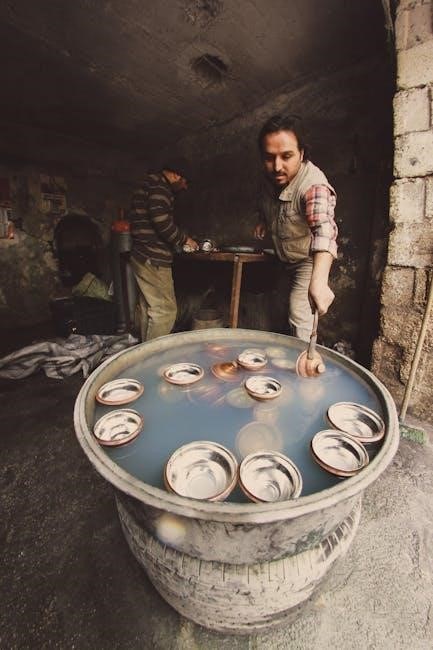
Warranty and Support
Dometic offers a 1-year limited warranty on water heaters‚ covering defects in materials and workmanship. Extended support is available through their customer service hotline or website.
8.1 Understanding the Warranty Terms
Dometic water heaters are backed by a limited warranty that covers defects in materials and workmanship for a period of one year from the date of purchase. This warranty applies to the original purchaser and is non-transferable. It includes replacement or repair of faulty parts and labor costs during the warranty period. However‚ it does not cover damage caused by improper installation‚ misuse‚ or failure to maintain the unit as per the manual. To validate the warranty‚ users must register their product within 30 days of purchase. For full details‚ refer to the warranty certificate provided with the heater or visit Dometic’s official website.
- Covers parts and labor for 1 year.
- Excludes installation-related issues.
- Registration is required for validation.
8.2 Contacting Dometic Customer Service
To assist with inquiries‚ Dometic provides multiple avenues for customer support. Users can reach out via phone‚ email‚ or live chat through the official Dometic website. Regional contact numbers are available to accommodate different geographic locations. For specific concerns‚ such as troubleshooting or warranty-related issues‚ it is advisable to visit the Dometic website and navigate to the “Support” section. There‚ you can find detailed contact information‚ including email addresses for technical assistance and customer service. Additionally‚ Dometic offers online resources‚ such as FAQs and user manuals‚ to help address common questions. Representatives are typically available during standard business hours‚ and responses to emails are usually provided within 24-48 hours. Having your model number and serial number ready can expedite assistance. For more information‚ visit Dometic’s official website.
- Phone‚ email‚ and live chat options available.
- Regional contact numbers for localized support.
- Online resources‚ including FAQs and manuals.
- Response time for emails: 24-48 hours.
- Model and serial numbers may be required.
